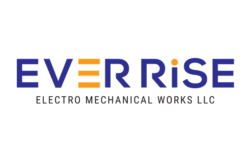Mechanical, Electrical, and Plumbing (MEP) engineering is at the heart of modern infrastructure, ensuring the efficient operation of buildings. As technology advances, Artificial Intelligence (AI) and the Internet of Things (IoT) are reshaping MEP engineering, making systems smarter, more efficient, and sustainable. This article explores how AI and IoT are revolutionizing MEP engineering and what the future holds for this industry.
The Role of AI in MEP Engineering
AI is transforming MEP engineering by automating processes, improving energy efficiency, and optimizing building performance. Key applications include:
1. Predictive Maintenance
AI-powered predictive maintenance reduces downtime and operational costs. By analyzing sensor data, AI can predict equipment failures before they occur, allowing engineers to address issues proactively.
2. Energy Optimization
AI-driven energy management systems analyze usage patterns and optimize heating, ventilation, and air conditioning (HVAC) systems to reduce energy consumption. Smart algorithms adjust settings based on real-time occupancy and weather conditions.
3. Design Automation
AI assists engineers in designing complex MEP systems by generating optimized layouts, ensuring compliance with regulations, and reducing human error. AI-driven simulations allow engineers to test different configurations before implementation.
The Impact of IoT on MEP Engineering
IoT connects physical devices and systems through the internet, enabling real-time monitoring, automation, and data-driven decision-making in MEP engineering.
1. Smart HVAC Systems
IoT-enabled HVAC systems use real-time data to adjust airflow, temperature, and humidity levels automatically. These systems improve indoor air quality while reducing energy costs.
2. Remote Monitoring and Control
IoT sensors provide real-time insights into building operations, allowing engineers to monitor and control MEP systems remotely. This capability is particularly useful for facility managers overseeing multiple buildings.
3. Water and Plumbing Management
IoT sensors detect leaks, monitor water quality, and optimize water usage. Smart plumbing systems help prevent water wastage and enhance sustainability efforts.
Benefits of AI and IoT in MEP Engineering
The integration of AI and IoT in MEP engineering offers several advantages, including:
Increased Efficiency – Automated systems reduce manual intervention, improving overall efficiency.
Cost Savings – Predictive maintenance and energy optimization lower operational costs.
Sustainability – Smart systems minimize energy and resource wastage, contributing to green building initiatives.
Enhanced Safety – AI-driven monitoring ensures early detection of potential hazards.
Future Trends in AI and IoT for MEP Engineering
Looking ahead, AI and IoT will continue to drive innovation in MEP engineering. Emerging trends include:
Digital Twins – Virtual replicas of buildings will allow engineers to simulate and optimize systems before implementation.
AI-Powered Robotics – Automated systems will assist in construction, installation, and maintenance tasks.
Blockchain for Data Security – Secure data exchange will enhance transparency and reliability in smart buildings.
Conclusion
AI and IoT are revolutionizing MEP engineering, making buildings smarter, more efficient, and sustainable. As technology advances, the industry will continue to evolve, offering new opportunities for engineers and building owners alike. Embracing AI and IoT is no longer optional—it’s the future of MEP engineering.
